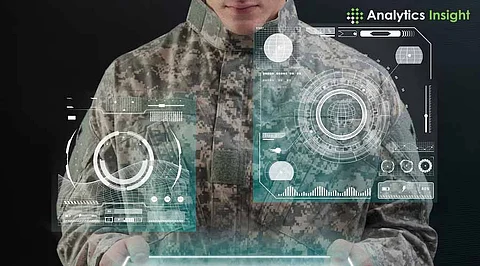

The integration of private AI into defense strategies is changing how modern militaries operate. Advanced AI-driven solutions improve situational awareness, help decision-making, and make better use of military resources. These innovations are reshaping military strategies, making forces more adaptable and prepared in complex environments.
Private AI improves situational awareness by analyzing large amounts of battlefield data in real time. AI-powered systems process information from multiple sources—drones, satellites, and ground sensors—helping detect threats quickly.
In places where traditional communication networks are down, private AI ensures continued intelligence gathering and operational efficiency. During the BRAVO Hackathon, a private AI model helped military forces spot potential enemy objects in difficult terrains without relying on cloud-based services. This ability is key for missions in remote or hostile locations where connectivity is limited.
A software-defined AI approach reduces the need for costly hardware upgrades, allowing military forces to deploy flexible solutions. By using off-the-shelf components, operational costs go down while keeping efficiency high.
This strategy aligns with the U.S. Department of Defense's modernization goals, ensuring a scalable and adaptable defense infrastructure. With software-driven AI, updates and improvements are smooth, avoiding the need for frequent hardware replacements and increasing military agility.
AI-driven predictive analytics are changing military planning by forecasting threats and optimizing mission strategies. AI algorithms analyze vast operational datasets, spotting patterns that indicate possible adversary actions.
This ability helps defense forces prepare in advance, allocate resources effectively, and lower operational risks. India has adopted predictive AI solutions to improve fleet availability and reduce equipment downtime, showing AI’s role in boosting military efficiency.
AI-powered autonomous systems are changing defense operations, lowering human risk while improving mission effectiveness. AI-driven drones and robotic systems handle surveillance, reconnaissance, and combat missions with precision.
Through these innovations, civilian loss is reduced while forming an optimal strategy for battlefield engagement. The current trend in demand dynamics for AI-enabled applications within the armed forces indicates an increased dependency on autonomous technologies for defense operations.
These virtues of automation do not take away from the ethical questions posed with their use in defense; the most common issue raised is whether or not an AI can conduct itself autonomously in actions with life-or-death effects. These ethical issues raise issues of accountability and control.
Strong cybersecurity measures are also crucial, as AI systems can be targets for adversarial threats. As militaries adopt AI-driven strategies, balancing technological progress with ethical responsibility is essential.
Another type of action that should-at all times be taken-in monitoring safety is strong cybersecurity measures. AI systems could be targeted with adversary threats. Therefore, it would be advisable for early military forced to strike a balance between technological advancement and ethical responsibility while applying AI in military strategies.
Private AI intends to modify the defense strategy by situational awareness improvement, predictive analytics, and automation through independents. The place that these technologies occupy in shaping modernity warfare will pervade as more of the global power pours in money into AI-driven military applications.
Such revolutionized innovations run glaringly and visibly through an invisible field as advanced military forces would be more navigable and flexible while moving through it.
